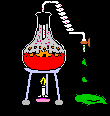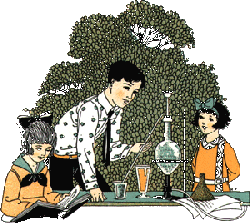
|
|
|
|
|
Science is a way of thinking,
a method to organize information to solve problems.

Your experiments need to be written like a scientist using the following headings:
|
Title
|
| Question: One sentence |
|
Hypothesis: Your hypothesis can have a lot of background information that leads you to the hypothesis that you chose. The hypothesis needs to be clearly labeled at the bottom of the background information. |
| Experiment: Briefly explain the experiment, not the procedure or the materials |
|
|
| Data Organized and Analyzed: This is not field data but organized data neatly presented and analyzed in charts, graphs, data tables. |
| Conclusion: Your conclusion should have your conclusions supported by your data and your supported by research of what others have done. |

Finally Scientists Publish their findings so other scientists can criticize and discuss all parts of the experiment
You need to separate yourself from your science project. When someone criticizes your work, it is intended to make you think so you can make your work really answers the question. Every comment needs to be considered carefully because others will see things you do not see. Do not feel that criticism of your work is criticism of you.
Back to Hints..............................................................................................Back to Top
Clip Art Credit:: Pageresource.com (A free Web Resource from DreamWeaver) http://www.pageresource.com/graphics/index.html
Created for the Fermilab
LInC program sponsored by Fermi National
Accelerator Laboratory Education Office
and Friends of Fermilab, and
funded by United States Department of Energy,
Illinois State Board of Education,
North Central Regional Technology in Education
Consortium which is operated by North Central
Regional Educational Laboratory (NCREL), and the National
Science Foundation.
Author(s): Miles Robinson (mrobinson@cranbrook.edu),
Brian Schad (schad@aaps.k12.mi.us
)
Cranbrook Schools, Kingswood Girl's Middle
School, Bloomfield Hills, Michigan and Lawton
Elementary Ann Arbor, Michigan
Created: February 15, 2001 - Updated: April 18, 2001
URL: /lincon/w01/projects/yourfoldername/student.html